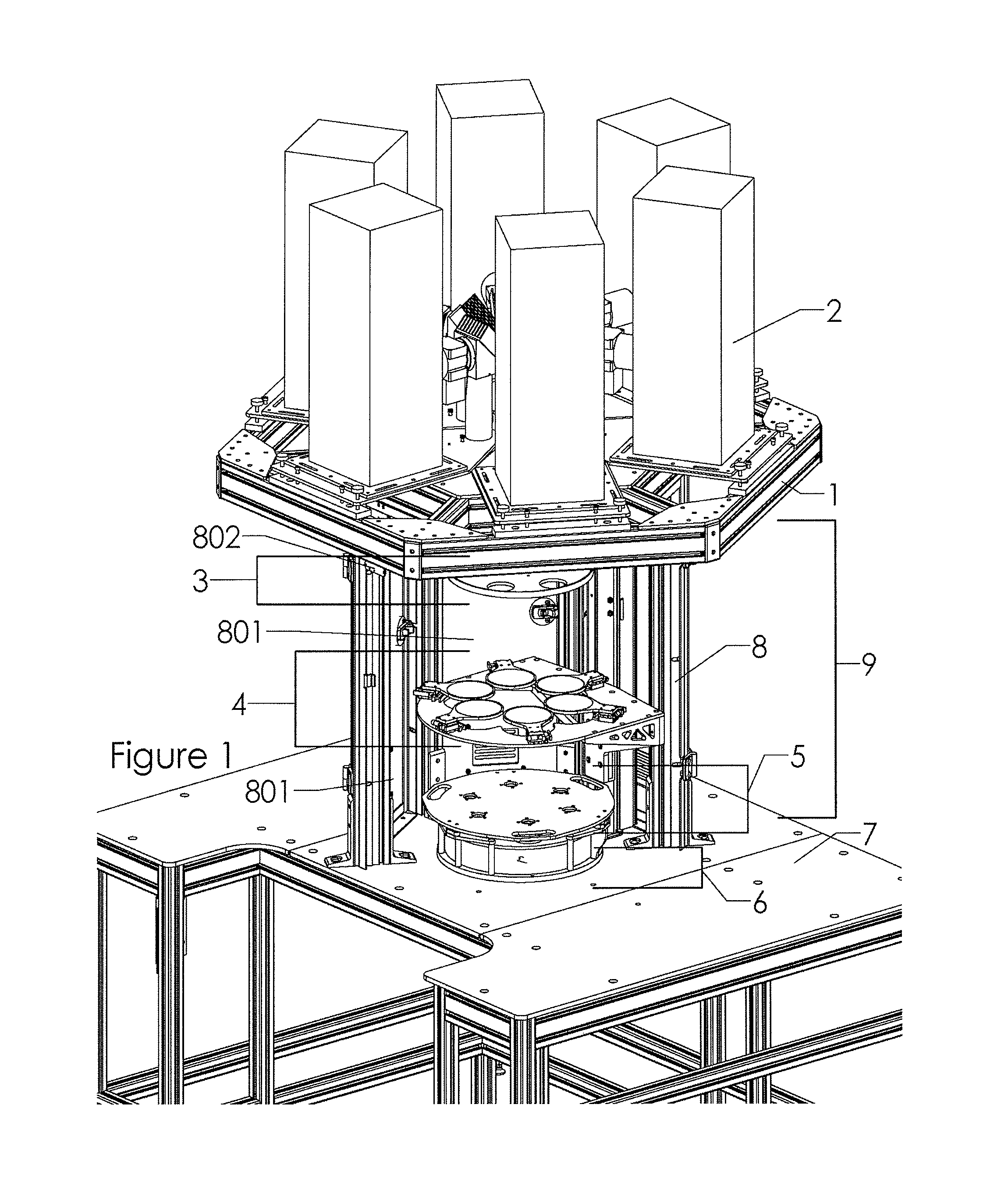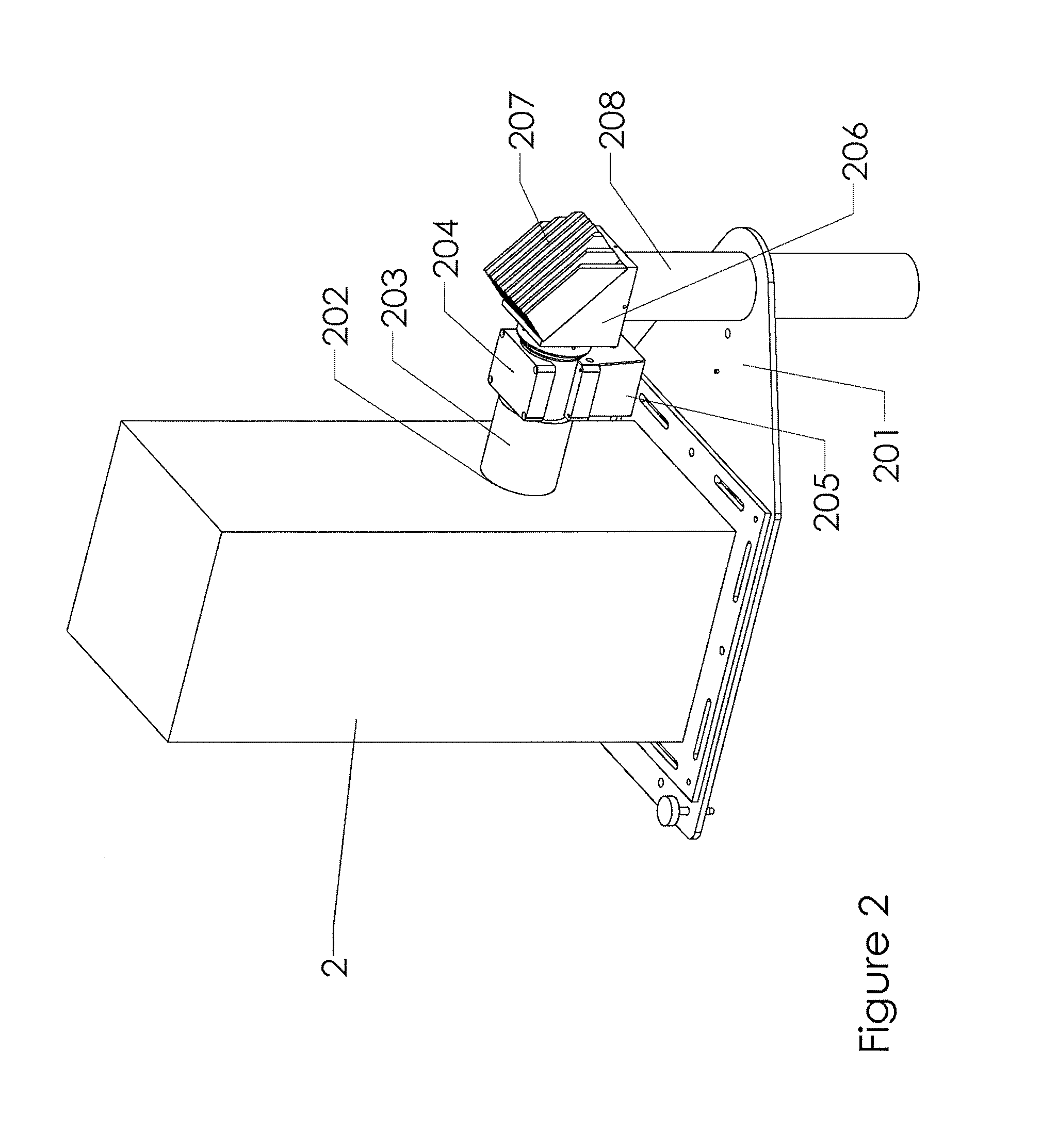Apparatus and method for highly accelerated life testing of solar cells
a solar cell and life testing technology, applied in the field of high-accelerated life testing of photovoltaic solar cells, can solve the problems of low power degradation, small impact of cell performance over time, and low module cost per watt, and achieve the effect of greater control of environmental variables
- Summary
- Abstract
- Description
- Claims
- Application Information
AI Technical Summary
Benefits of technology
Problems solved by technology
Method used
Image
Examples
Embodiment Construction
[0026]FIG. 1 shows one embodiment of a HALT apparatus of the invention. The components of the apparatus as shown are organized vertically to conserve space, although one skilled in the art will understand that other arrangements are possible if desired. The upper frame 1 of the apparatus serves as a platform for one or more light boxes 2, each of which contains an independent light source (not shown). The frame posts 8 supporting upper frame 1 form the shell of lower frame region 9. Lower frame region 9 houses components to focus and concentrate light on the solar cell, including a light shuttering system 3, a light focusing system 4, a light clipping / secondary system 5, and a vacuum test chamber 6. Support structure 7 forms the base on which vacuum test chamber 6 sits and provides sealed input and output connections thereto.
[0027]Referring to FIGS. 1 and 2, the base plate 201 of each light box 2 is securely attached to upper frame 1 with three or more points of attachment such that...
PUM
 Login to View More
Login to View More Abstract
Description
Claims
Application Information
 Login to View More
Login to View More - R&D
- Intellectual Property
- Life Sciences
- Materials
- Tech Scout
- Unparalleled Data Quality
- Higher Quality Content
- 60% Fewer Hallucinations
Browse by: Latest US Patents, China's latest patents, Technical Efficacy Thesaurus, Application Domain, Technology Topic, Popular Technical Reports.
© 2025 PatSnap. All rights reserved.Legal|Privacy policy|Modern Slavery Act Transparency Statement|Sitemap|About US| Contact US: help@patsnap.com



